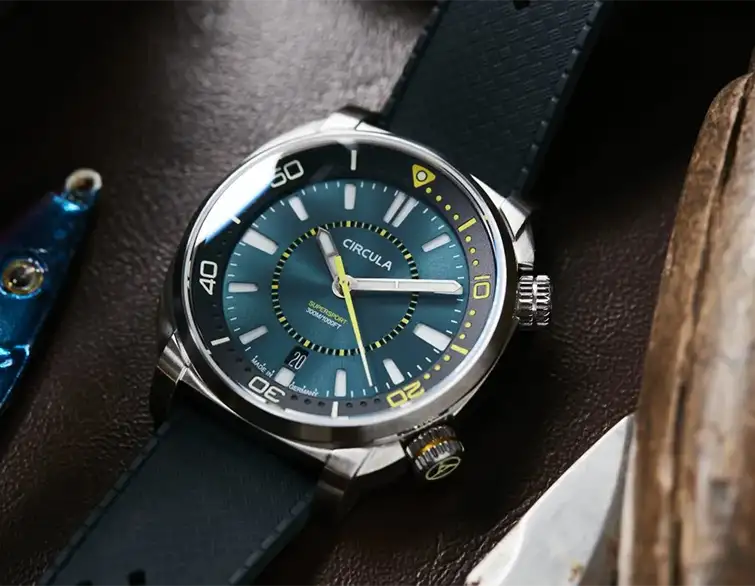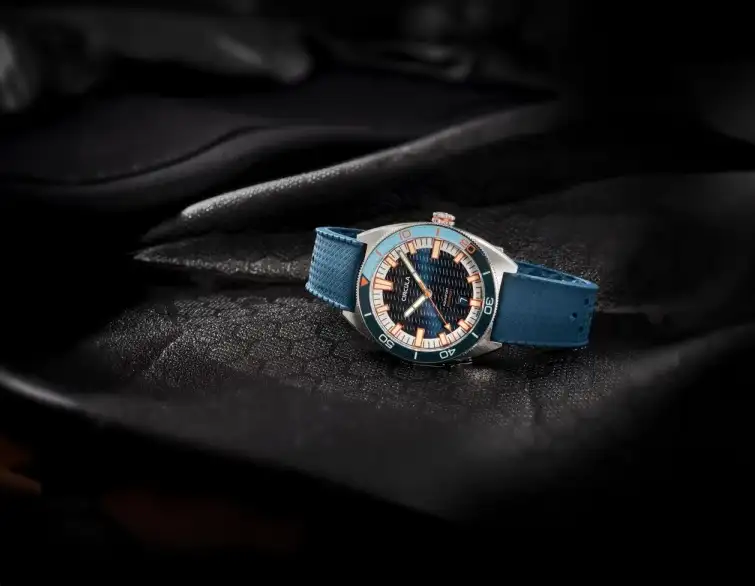10 ATM and Co.
What do these indications on a watch mean?
ATM stands for physical atmosphere ...
and was the unit for pressure in Germany and Austria until 1977. Since 01.01.1978, the SI-compliant unit for pressure has been the bar. 1 ATM corresponds to 1.01325 bar. ATM was derived from the mean air pressure at sea level, which corresponds to 1 ATM. This pressure is caused by the weight of the earth's atmosphere.
If you now dive into the water, then for every 10 meters of diving depth, approx. 1 ATM or 1 bar of hydrostatic water pressure is added to the atmospheric air pressure of 1 ATM or 1 bar. At a water depth of 100 meters, a watch is then exposed to an overpressure of 10 ATM or 10 bar

What does 10 ATM mean?
For a watch, 10 ATM means that it can withstand a pressure of 10 bar or the pressure of a water column of 100 meters. In practice, this corresponds to the pressure of a flowing jet of water when washing hands, showering or bathing.
10 ATM therefore does not mean that a watch is water-resistant to a diving depth of 100 meters, but that it can withstand the pressure of a water column of 50 meters. When swimming, pressure peaks higher than 10 bar can occur due to the swimming movements. Due to these pressure peaks, only watches with the designation 10 ATM or higher are suitable for swimming.

Water resistance of watches:
Categories and legal regulations
Classification of watertightness according to ISO 2281 and DIN 8310 September 2010
To receive this designation, the watch must be able to withstand 30 minutes in 1 meter of water and 90 seconds in 20 meters of water without water penetrating the case. If the “water resistant” is followed by an indication in bar or atm, then the test conditions have been tightened and the watches have a higher water resistance or water pressure resistance.
Criteria of the DIN 8310 and ISO 2281 standards
- 3 bar ≈ 3 atm (≈ 30 m): Watches with the designation 3 ATM withstand a test pressure of 3 bar for a limited period of time and are resistant to water splashes when washing hands or light rain. The elegant retro quartz watches from Circula, for example, meet this standard.
- 5 bar ≈ 5 atm (≈ 50 m): Watches with a 5 ATM rating withstand a test pressure of 5 bar, are suitable for everyday use and can be kept on when washing hands, showering and bathing.
- 10 bar ≈ 10 atm (≈ 100 m): Watches marked 10 ATM withstand a test pressure of 10 bar and are suitable for swimming and snorkeling. As a field watch, the Circula ProTrail is even water-resistant up to 15 ATM.
- 20 bar ≈ 20 atm (≈ 200 m): Watches marked 20 ATM withstand a test pressure of 20 bar and can be worn for snorkeling and freediving at shallow depths. The Circula AquaSport II diver's watch meets this 20 bar standard and has a screw-down crown for additional protection against water ingress.
- For greater water depths, watches should be tested to 30 bar (or more) water resistance, such as the Circula SuperSport. This watch has a real sensation inside: a genuine super-compressor function that achieves a better seal with increasing pressure thanks to a compression spring in the case back
Regular review
Water resistance information should be checked regularly. As the water resistance of watches deteriorates over time due to the natural wear and tear of the seals, sweat, acids and general wear and tear, the information on the case backs only applies to new watches.
Strong temperature fluctuations, e.g. in winter, can also cause the various materials that make up a watch case to expand differently. Strong temperature fluctuations, e.g. in winter, can also cause the various materials used to make a watch case to expand differently.
If you want to wear your watch while swimming or diving, for example, and want to be sure that the watch still has the specified water resistance, we recommend that you have your watch checked regularly for water resistance. By regularly checking the seals, water damage and the associated expensive repairs can be avoided.

